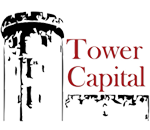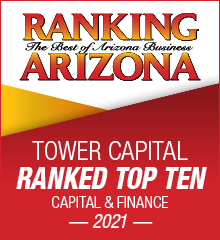IREM CCIM Annual Economic Forecast 2022: Part 1 National Outlook
The sentiment was positive at the IREM CCIM Annual Economic Forecast which was held at the Biltmore Resort in Phoenix, Arizona on Friday, January 14, 2022. The event featured keynote speaker Elliot Pollack, a local economist, CEO of Elliot D. Pollack and Company, teacher, consultant, and author. Elliot was preceded by four panels of experts focusing on multifamily, industrial, retail, and office asset classes.
Elliot opened his presentation by noting that the economy continues to recover at a rapid pace, however, the rate will be erratic and there may be some challenges along the way. This is not a typical business cycle and will behave differently than in the past because the COVID recession was caused by the government forcing large parts of the economy to close and not by “natural” causes. Elliot noted the following encouraging aspects of our national economy:
- Consumer – strong
- Business – strong
- Housing – strong
- Fed policy – remains stimulative but less so…
- Fiscal policy – highly stimulative
- In near term demand side of the economy should remain strong
BIGGEST RISKS
- Supply Chain Issues
- Lack of labor
- Inflation
- Higher Interest Rates
- Bad Government Policy
- Effect of all these on Housing Affordability
- Current and Future Variants
- Black Swan Event
Despite these risks, the outlook remains optimistic as the country has already surpassed peak GDP levels prior to COVID with strong demand by consumers who are sitting on record levels of cash and low debt caused by forced savings and government stimulus. Yet businesses are having difficulty replenishing inventories due to global supply chain issues, as well as facing challenges finding workers in a shrinking labor pool.
The global supply chain has evolved where everything is interconnected. Shortages of one product or component create supply shortages and price swings of other products or components. Until lock downs and other things that affect the ability of a factory to run effectively and get its products delivered at normal rates remain, there will continue to be disruption. This is a worldwide issue where the end is difficult to ascertain and will slow down GDP growth in the present but will speed up GDP growth later as pent-up demand is met. This has created upward pressure on prices in the near term, but Elliot predicts that prices will fall once capacity comes back online, however, the price declines will not erase ALL of the price increases.
Furthermore, despite a healthy amount of job openings, twice as many job openings as there are unemployed, people are not going back to work. In fact, the number of unfilled job openings compared to those unemployed currently far exceeds the 48-year historical average of 23%. Headwinds for the labor market will lead to higher wages and price increases to consumer goods and services.
Inflation is hidden throughout the service economy as a combination of COVID and federal incentives discouraging people not to work have decimated services. Even where costs have not risen, the quality of service has declined. Think about your experience at most restaurants these days. Last year the government spent $1.9 trillion on an American Rescue Plan that was supposed to create 7 million jobs, but created very few, with more stimulus expected as the Build Back Better bill is reintroduced in smaller pieces. Having promised us only transitory inflation the Fed currently has no good options in dealing with the issue. Elliot noted that raising rates too rapidly might send us into a recession in an election year and will increase the cost of borrowing to the national debt. On the social side, cutting spending is politically unfeasible and raising taxes could undercut economic growth.
Stocks and home prices are at all time highs, wages are at all time highs and accelerating, job openings are at all time highs, inflation is at the highest level since 1982, yet the government continues to inject liquidity into the system while holding rates low and spending trillions more. All of these factors have led to too much money chasing too few goods, causing prices to increase.
Underbuilding of housing during the past 10 years has led to an extreme shortage of supply, with vacancy rates for both single family and multifamily rentals at historical lows. The estimated shortage of single-family homes is 25,000 and 15,000 for multifamily in Grater Phoenix, on top of what is needed to meet normal population growth. The national housing shortage is in the millions of units. Currently in the US there is only a 2.1 month supply of homes for sale which is half the number of homes for sale two years ago. In Phoenix both new and resale home values are up 20% with extremely low risk of overbuilding, with similarities in many other growth markets, particularly the sunbelt states.
The primary reason housing remains affordable is due to exceptionally low interest rates, but what happens if they go up? Affordability will become an issue and at least 3 interest rate hikes are expected this year for as much as 100 basis points. Total housing construction should continue at or near current levels for a while but what will be the mix of single family and apartment units?
The overall conclusion for the national economy is that the demand side looks very healthy but the supply side needs work. Unless there are very poor political decisions that affect the economy, a black swan event, or a dramatic move in interest rates, the economy should remain strong through 2023.
Please join me for part 2 where I will focus on Arizona and the 4 major asset classes, multifamily, retail, office, and industrial.





